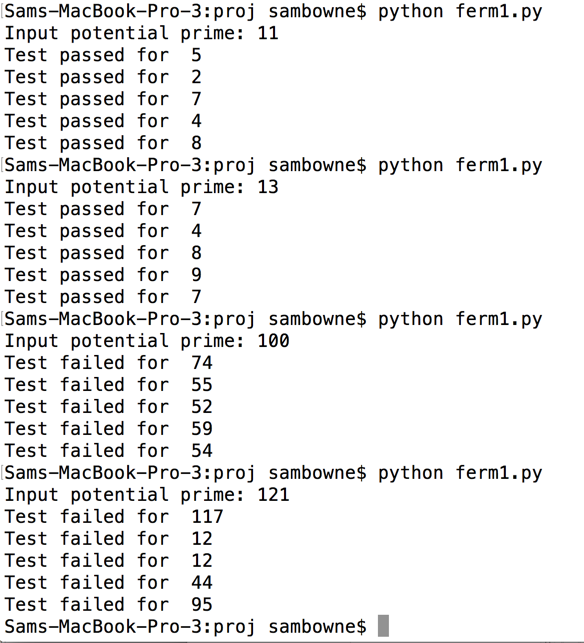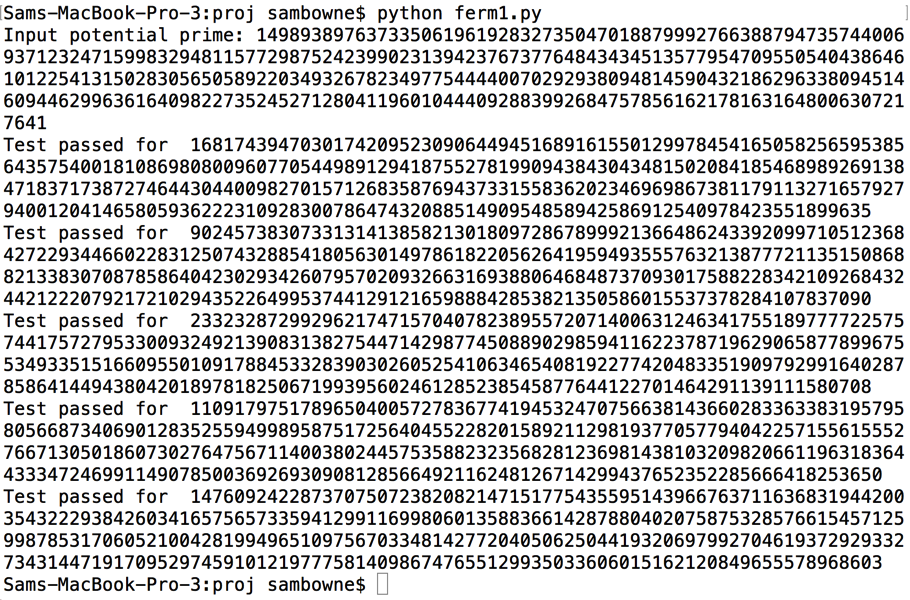

So testing that condition for several random values of a can be used as evidence that p is probably prime.
This site explains the Fermat primality test and its flaws in more detail:
https://en.wikipedia.org/wiki/Fermat_primality_test
from random import randint
p = int(raw_input("Input potential prime: "))
for i in range(5):
a = randint(2,p-2)
if pow(a, p-1, p) == 1:
print "Test passed for ", a
else:
print "Test failed for ", a
As shown below, 11 and 13 pass all the tests because they are prime, but 100 and 121 fail because they aren't.

149893897637335061961928327350470188799927663887947357440069371232471599832948115772987524239902313942376737764843434513577954709550540438646101225413150283056505892203493267823497754444007029293809481459043218629633809451460944629963616409822735245271280411960104440928839926847578561621781631648006307217641
It works, because Python really can handle any size of integer, as shown below.

10**300
Find the first number above it which is prime.
Use the form below to put your name on the WINNERS PAGE.
Save a whole-screen image of the winners page showing your name, as shown below, with the filename "YOUR NAME Proj 4x1".

Find the first set of companion primes above
10**100
Use the form below to put your name on the WINNERS PAGE.
Save a whole-screen image of the winners page showing your name, as shown below, with the filename "YOUR NAME Proj 4x2".
